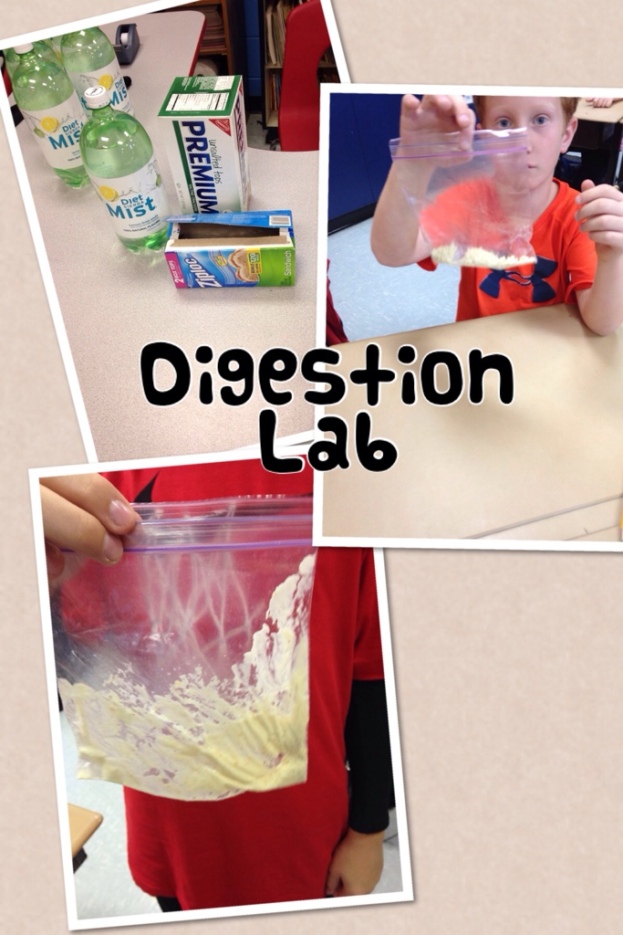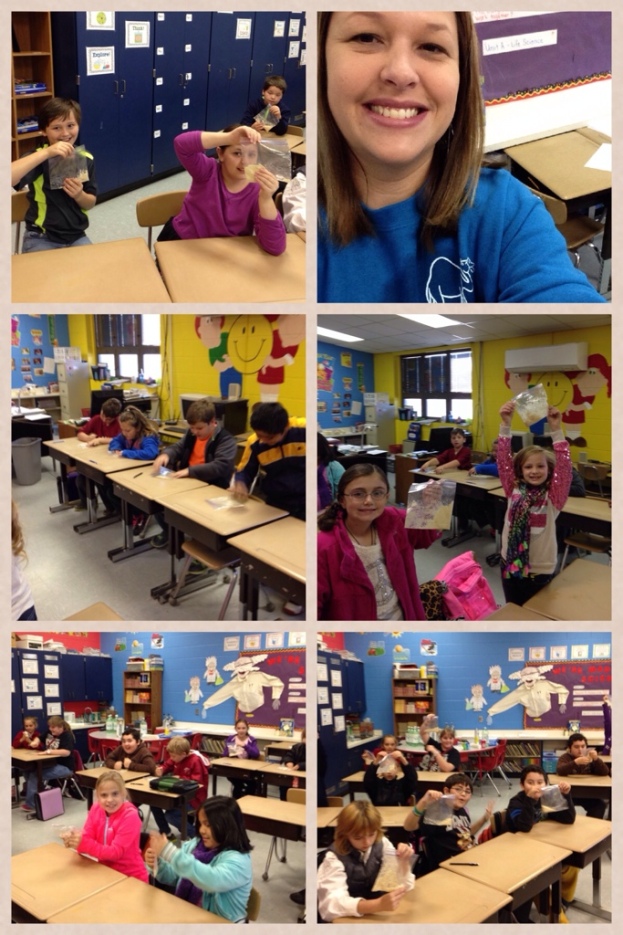Thank goodness for Pinterest!! I have found the cutest labs and activities for our 4th graders to do!! Today’s lab modeled digestion. Each child received a sandwich bag and 2 saltine crackers. We zipped our bags closed, and mashed our crackers together to model mechanical digestion. Mechanical digestion is when we chew our food up!! Next, we poured a small amount of Sierra Mist in each bag. This represented chemical digestion which is the stomach acid helping to break down the food into simpler compounds to digest. This lab helped us to ‘see’ digestion in action!! 🙂
Tag Archives: Human Body
Digestion Lab 11/20/13
Digestion Lab 11/20/13
Digestion Lab 11/20/13
Digestion Lab 11/20/13
4th Grade Lung Lab 11/18/13
This week we are finishing up Chapter 5 on Systems of the Human Body. Today was lab day — We used 2 balloons, 2 rubber bands, a water bottle, a straw, and modeling clay to model a lung and a diaphragm. The lung part was very easy to model — the diaphragm was much harder!! The sturdier the bottle the more likely the student was to make a working diaphragm. Lesson learned for this newbie Science Teacher — next year I will tell students to bring in 20 ounce Soda bottles, Sunny Delight bottles, or Gatorade! These were the ones that worked! Even though not all diaphragms were in working condition — I think we all had lots of fun and learned lots!!
Click on the link below for a video of our first working Lung AND diaphragm of the day!! 🙂
Respiratory System Song by Mr. Parr 11/14/13
Today in Science we learned about the Respiratory System and the Circulatory Systems. I loved this Mr. Parr song about the Respiratory System!!
Students need to bring a water bottle to class for our lab tomorrow , AND we will get our Chapter 5 Study Guide for our test next Thursday!!
Blinking — Voluntary or Involuntary? 11/13/13
Today in Science we kicked off our Human Body unit with a Science Lab!! Our lesson today was about The Skeletal System and the Muscular System. For any interested teachers, the link to our lab is here. I love TPT!
In this picture students are counting the number of times they blinked in a minute!! 🙂 Don’t you love this timer on the Smart Board?? I think I will be using this LOTS!!
First, students had to count the number of times they blinked in a minute. Next, students timed themselves to see how long they went without blinking. I lasted 12 seconds — my eyes were dry!! 🙂 Finally, students got a plastic sheet protector and a cotton ball. Students held the plastic sheet in front of their face, while the other student tossed the cotton ball at the sheet. As they threw, they tallied if the person blinked. After all the labs were completed, we analyzed our data to see if we thought blinking was voluntary or involuntary.
Coming up tomorrow — students should bring water bottles to class. We are making a model of how our lungs work!!
Skeletal and Muscular Systems 11/13/13
Today in Science we read Chapter 5 Lesson 1 about the Skeletal and Muscular Systems of the Human Body. I thought I would share the song we listened to in class today about the muscles!! We love Mr. Parr and his creative songs to help us learn our content!!





